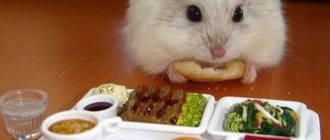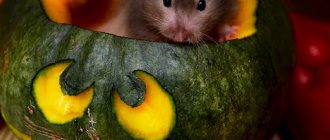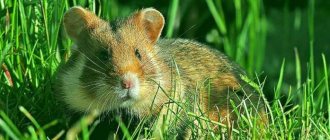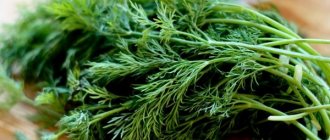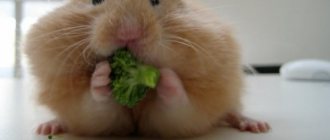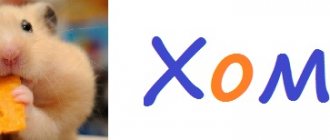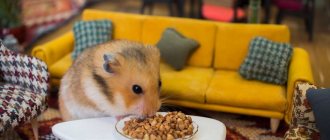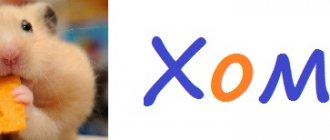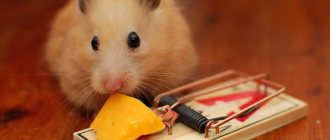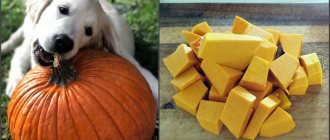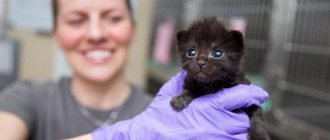- home
- Nutrition
07.03.2018
To pamper their beloved pets, many owners are ready to provide them with the most exquisite dishes, including exotic fruits. But some of them are worried, thinking about the question, are hamster and banana compatible? Let us answer right away - there are no special contraindications regarding the presence of this vegetable in the diet of a furry animal, but some precautions are worth following.
Is it possible to give banana to Djungarian hamsters?
This breed often suffers from high blood sugar. Bananas are sweet and high in calories; they can be given to dzhungarikas once a week. And it doesn’t matter in what form you serve it: in small quantities you can feed it with both banana chips and fresh fruit.
In winter, zoologists advise completely avoiding eating sweet fruits. Digestion slows down in hamsters; the pulp of the fruit can harm your pet.
For older hamsters, the portion can be increased. As you age, your teeth weaken and it becomes difficult to chew. It would be a good idea to dilute their food with pumpkin or cucumber.
Hamsters
Most often, hamsters of the Djungarian and Syrian breeds are sold in pet stores. Although now you can also find Angora, furry animals. But these are already the fruits of human selection work. Syrian hamsters have golden fur. Body length can reach 20 centimeters. Dzungarian individuals are smaller than their Syrian relatives. Their body length is up to 10 centimeters, and their color is distinguished by several dark, almost black stripes running along the back. Both breeds of hamsters are undemanding in terms of living conditions.
You just need to install a sufficiently voluminous cage, lay down sawdust or a special filler, install a feeder, a drinking bowl and a play wheel for physical exercise.
What is the danger of bananas for hamsters?
Djungarians can get diabetes if they overeat fruit. But this is not all the possible consequences.
Bananas are a treat for these rodents, so they can overeat on them. This can lead to obesity, fatigue, and lethargy of the animal. In addition to general discomfort, in such a situation the heart suffers from heavy loads.
In addition, it is dangerous because it sticks to cavities in the hamsters’ bodies from the pharynx to the digestive system, and this can cause suffocation and death.
The first times you eat a new food you need to monitor it. If, when introduced to bananas, your pet eats reluctantly, begins to choke, or completely refuses the product, it should be removed from the diet.
The fruit can cause allergic reactions. This is another reason why it is necessary to monitor the animal when introducing new food.
Possible contraindications
There are no clearly defined prohibitions for hamsters to eat bananas, but it is still necessary to take into account possible contraindications.
These could be:
- the presence of diabetes in the animal, characterized by excessive drinking, excessive appetite and excess weight;
- female pregnancy - the fruit provokes high gas formation in the intestines, which can lead to the loss of cubs;
- an animal that has not reached 2 months—the young body is not quite adapted to eating wet food;
- individual intolerance or lack of preference in use.
Important! Observation and attention of owners to their pet will help to prevent possible contraindications in time and minimize threats to life and health.
Banana in the diet of cubs and pregnant females
Fruit should not be given to baby hamsters. Their body is still very small; banana fruits can easily clog the airways. In this case, the rodent risks suffocation. But if you really want to pamper your pet, then there is a solution - banana chips. They are hard, so they will not be able to stick to the cavities of the body.
Banana chips are dried (baked) pieces of the fruit. The sugar concentration in this dish increases. You should also be wary of store-bought chips, as they may contain various additives that are harmful to rodents. It will be safer to cook them yourself in the oven.
Bananas are prohibited for pregnant hamsters. The fruit should not be given to females expecting offspring; it can cause bloating. If this happens, the offspring will be lost.
Whole fruit
Is it possible to give hamsters a whole banana? No, the fact is that such a fruit is quite large in size in relation to the hamster’s body.
Therefore, the animal simply cannot cope with so much food at once. The remaining banana begins to quickly deteriorate and can cause poisoning to the animal. In everything it is best to know when to stop and not to overfeed your beloved fluffy.
What can you give?
Hamsters can easily eat oats. But they eat rice only in limited quantities. Corn, wheat, rye and barley can be given without a doubt. But buckwheat and lentils can be used only in small quantities. As for berries and fruits, they can be given both fresh and dried.
All fresh fruits are cleaned of seeds and seeds in advance. Without these components, such food does not pose any danger. It is worth considering that the bulk of juicy fruits are rich in carbohydrates and glucose. Therefore, a strict limitation is imposed on the quantity of such ingredients.
Their maximum share in the daily menu should not exceed 5%. Otherwise, the hamster's life is at risk. Fruits and berries are accumulated in advance. Both dried and frozen preparations are suitable. Dried fruits (bananas, dried apricots, raisins, dates) are soaked for 3 or 4 hours before being placed in the feeder.
Juicy food of any type must be thoroughly washed. In addition, we must try to remove as much pesticides and nitrates as possible. To do this, you will have to soak the greens and peel the apples. Djungarians love:
- oatmeal;
- buckwheat;
- barley;
- oats;
- beans;
- sunflower seeds;
- pumpkin and melon seeds;
- Walnut;
- peanuts and hazelnuts;
- sprouted wheat;
- sprouted oats;
- cashew nuts.
It is quite reasonable to feed Djungarian hamsters with sprouted alfalfa. Recommended green plants include nettle leaves, clover, basil, and celery. It is appropriate to use dill and pea pods in their entirety. Vegetables such as:
- broccoli;
- cucumber;
- carrot;
- cauliflower;
- tomato;
- turnip;
- beet;
- pumpkin;
- radishes and other crops.
Good berry and fruit crops include plums, peaches, pears, cherries, gooseberries, grapes, cherries, and rose hips. Both blueberries and apricots go quite well. A hamster's teeth are strong enough for the animal to eat small twigs and bark of deciduous and fruit crops. The main “candidates”: cherry, apple, poplar and maple.
Beech, willow and birch twigs, pieces of the bark of these trees are also suitable for rodent food. He will be able to sharpen his teeth on such solid food.
Protein dishes should be added to the hamster’s diet every 2-3 days. The best options: boiled chicken, boiled eggs (quail eggs are also acceptable), worms from a pet store or dug up yourself, shrimp. Some hamster breeders use yogurt (only without any additives) and low-fat varieties of cottage cheese.
Alfalfa and timothy will provide hay for your hamster. Such food will provide the animal with plant fiber.
Owners' opinions
People who have hamsters say that they are omnivores. Sometimes they may even eat something they shouldn’t, such as smoked sausage or chocolate. Can hamsters have a banana? As we have already found out, yes.
The owners say that this fruit can be given to hamsters, but little by little. The owners also advise: you need to monitor the condition of the pet. If, after consuming a new fruit, you notice any signs of illness in your animal, then you should not give this fruit to your rodent.
Portion size and feeding frequency
Bananas should not become the main product in a hamster's diet. The maximum allowed serving is a quarter of a teaspoon 2 times a week.
Be sure to check if bananas are left in your pet’s bins (corners of the cage, animal’s cheeks). If you don't throw away uneaten food in time, it can start to rot. If they remain in the pet’s mouth for a long time, then the animal’s teeth begin to deteriorate along with them.
Article on the topic: Is it possible to give a hamster cookies, how to make them yourself
What kind of strawberries can I give?
Strawberries should be given to your pet rodent of good quality. It must be mature and free of damage or rot. You should discard this berry out of season, since production that is too early often contains excess nitrates, pesticides and growth stimulants. It can be treated in a store or market with drugs for long-term storage.
It is best to use produce from your own garden. If this is not possible, then it is recommended to buy products from local producers during the season, rather than imported ones. Before giving to a pet, strawberries should be washed, sorted and peeled.
Important! In winter and spring it is useful to give berries that have been frozen. They retain the bulk of useful elements and replenish the lack of vitamins during this period
Pomegranate seed tincture
Pomegranate tincture is easy to prepare at home. It contains alcohol (vodka, moonshine), pomegranates, lemon, cinnamon, granulated sugar. What the body lacks can be supplemented with a tincture, which has excellent taste and benefits.
Its regular consumption helps:
- reduce the number of cholesterol plaques;
- carry out prevention against infections;
- relieve inflammatory foci of various nature;
- relieve premenstrual condition.
To feel good, it is enough to consume 1 tbsp. l. before meals twice a day and drink for 2 months. The tincture is stored in the refrigerator and taken for a maximum of 3 months (it cannot be stored longer).
The benefits of fruit for rodents
The composition contains a large amount of vitamins and microelements.
Magnesium and potassium have a positive effect on the animal’s musculoskeletal system, its cardiovascular, nervous and urinary systems.
Iron increases hemoglobin content, helps relieve fatigue, hunger and restore strength.
Phosphorus is necessary to strengthen the animal’s bones and teeth.
The main thing is to use the product in moderation. Digestion is normalized, the blood vessels in the rodent’s body will become flexible and elastic.
Morning time is most favorable for eating fruits
When choosing a banana for your pet, pay attention to the peel. It should be yellow and strong
Rotten, blackened fruits should not be given.
You can start feeding your pet these fruits in the second month of life.
Great article 8
Some tips
To arrange the animal's cage, it is worth remembering that hamsters are burrowing animals. Therefore, they need a shelter where they can rest in silence and make their supplies for a rainy day. Cleaning the cage should be done every two days, cleaning out all contaminated areas of the bedding and spoiled supplies. The feeder should always be filled with food, and the drinking bowl with fresh water.
Hamsters rarely live in pairs. They do not like it when strangers enter their territory. Therefore, you should not get a couple of hamsters and keep them in the same cage. To breed rodents, the female and male are kept in separate cages and only brought together at the time of mating. Born babies are separated from their mother 2-3 weeks after birth.
That’s probably all that future and current owners of cute creatures – hamsters – need to know. Taking care of such a small creature will bring a lot of positive emotions and pleasure.
Prohibited foods can be deadly
The list of what is prohibited is very extensive; in fact, there are much more prohibited products than can be covered in one article. But the list of what can be given to Djungarian hamsters from food is also impressive, so there is no point in experimenting with unsafe products. The ban may seem unreasonable, but there is always a reason.
Risk of poisoning
Some food that is familiar to us is real poison for the Djungarians. Almonds and apricot kernels contain hydrocyanic acid, watermelon accumulates nitrates, honeysuckle and elderberry cause suffocation and cramps. Potatoes may contain solanine. The problem is the small size of the animal and its sensitive body. Even a microscopic dose of a dangerous substance can cause intoxication.
Cause constipation
Any astringent products (persimmon) slow down intestinal motility due to the high content of tannins. Constipation is very dangerous for rodents.
Causes diarrhea
Foods that irritate the digestive tract or have a laxative effect should not be given to dwarfs. This is hot ginger and any spices that are found in human food (paprika, salt).
Cause fermentation
Intestinal bloating leads to the death of the rodent in a matter of hours. Foods that cause gas include cabbage, brown bread, and beans.
Too fat
The rodent's liver is not able to cope with foods that are too fatty. Even seeds, which are what Djungarians can eat, are given in moderation, and foods such as oil and fried foods are completely excluded. Avocado contains too much fat.
Cheek pouches hurt
Sometimes the product itself is not dangerous. But given the small size and habits of the pet, it causes problems. Dry pasta should not be given to your dwarf hamster, not because wheat is dangerous, but because it can injure its cheek pouches by stuffing spaghetti there.
Abscesses and inflammation of the sac are a serious problem that requires treatment. Owners, faced with such a nuisance, even first peel the seeds from the husks before feeding the jungarians.
Allergy risk
Essential oils, brightly colored fruits, vegetables and berries can cause allergies. If after eating strawberries your hamster’s eyes run, the skin turns red and itches, it should be excluded.
Sometimes a product is prohibited for several reasons: cheese is both salty, fatty and rich in lactose, which is very difficult to digest.
How to eat pomegranate correctly
Pomegranate seeds contain complex carbohydrates or polysaccharides: starch and fiber. These substances are needed by the gastrointestinal tract for the functioning of its peristalsis and the removal of toxins. Due to enzymes, the bones are partially digested, and the intestinal microflora completes the work.
There are different varieties of pomegranates and there are fruits with soft or small seeds. But the contents of the fetus can also be tough, because this cannot be determined in advance. Therefore, whether it is possible to eat pomegranate with seeds is up to everyone to decide for themselves. Some people prefer to eat the whole grain, while others try to get rid of the seeds by squeezing only the juice. Both options have a right to exist and will not cause harm to health.
How to eat pomegranate correctly? Before eating, the fruit must be cut so as not to damage the contents and prevent loss of beneficial juice. If you cut the fruit with a knife, then part of the tasty product is lost. We carry out the cutting according to the rules:
- cut off the place of the inflorescence with a knife;
- make small vertical cuts;
- Place the fruit on a flat surface;
- press with your hand and the fruit breaks into several slices;
- separate each slice;
- We eat a piece at a time for our pleasure.
There is another option for obtaining delicious pomegranate seeds. Place the fruit in water and cut off the top part under water, peel the peel and select the grains with your hands, wash the peeled seeds using a sieve.
